
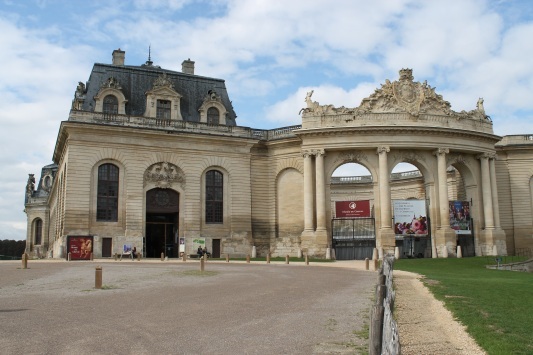
Le site
Les Grandes écuries du château de Chantilly ont été bâties de 1719 à 1734 par Jean Aubert sur le modèle des Grandes Ecuries de Versailles, à la demande de Louis-Henri de Bourbon, septième Prince de Condé. Comme l'ensemble du Domaine du Chantilly qui comprend en sus le château, ses dépendances et son parc, ainsi que la forêt et le champ de courses, les Grandes Écuries sont la propriété de l'Institut de France depuis 1886 à la suite d'un don du duc d'Aumale. Plus vastes écuries de France après celles de Versailles, elles eurent une influence considérable dans le décor architectural et sculpté des bâtiments équestres en Europe, et tout particulièrement en Allemagne, jusqu'au xixe siècle.
Elles abritent aujourd'hui le Musée vivant du Cheval, et ce depuis 1982.
Un peu de géologie ? Les altérations
En géologie, l'altération est l'ensemble des modifications des propriétés physico-chimiques des minéraux, et donc des roches, par les agents atmosphériques (altération météorique), par les eaux souterraines (altération de subsurface) et les eaux thermales (altération hydrothermale). Elle dépend en particulier du climat, de la température des eaux, de la nature des roches et de leur degré de fracturation
Effet du climat
L'altération des roches dépend en grande partie de la présence d'eau. Elle est donc directement liée à la hauteur des précipitations. L'altération est quasiment nulle dans les déserts secs, comme le désert du Sahara, où l'érosion est purement mécanique. Elle est également très limitée dans les milieux où l'eau liquide est rare, comme c'est le cas en haute montagne ou dans les régions situées au hautes latitudes (climats polaires). Dans les zones où les précipitations ne sont pas négligeables, l'altération est importante.
Quelques exemples d'altérations
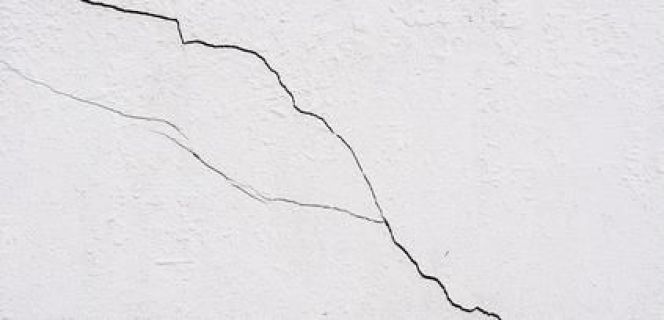
-
L’alvéolisation est quand une partie superficielle de la roche se désagrège et tombe en laissant sur le parement en situation, soit des alvéoles, soit des sillons, séparés les uns des autres par des arêtes dures.
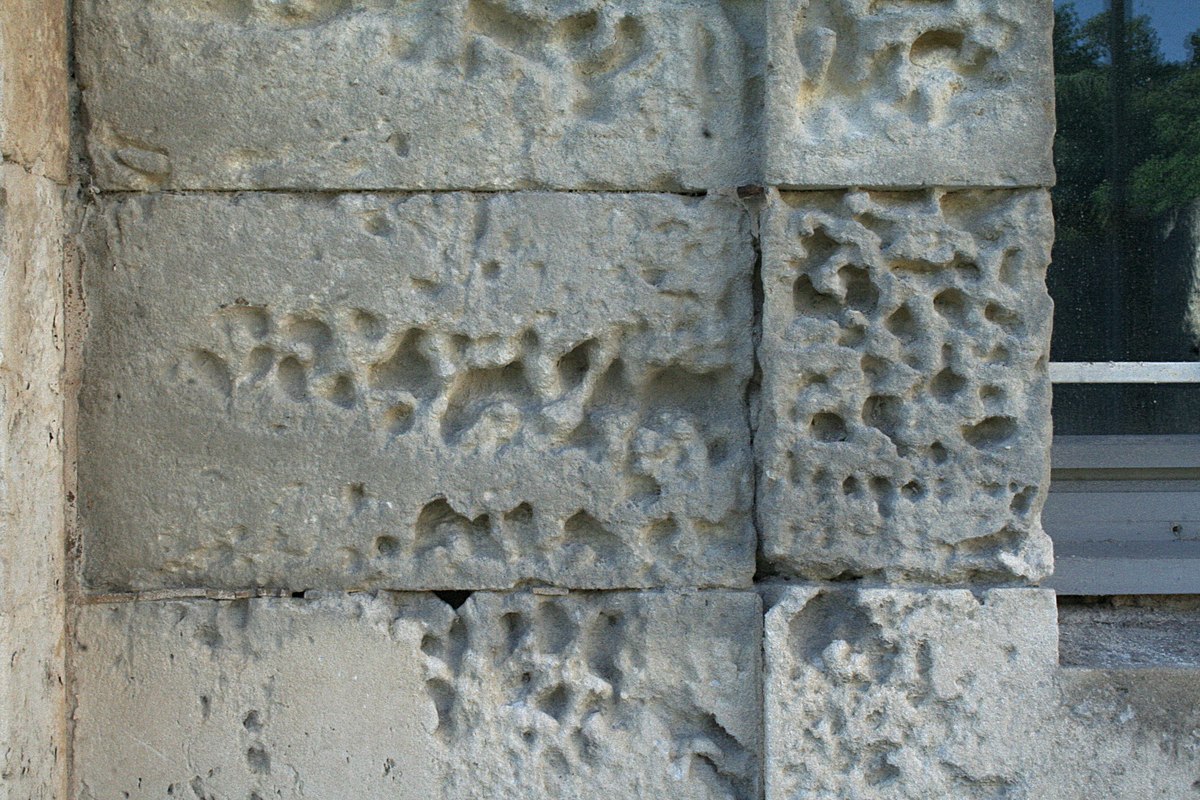
-
La desquamation est la traduction physique, visible, d'un certain nombre de processus de dégradation de la roche (météorisation). Elle se manifeste par le détachement de lamelles ou écailles superficielles.
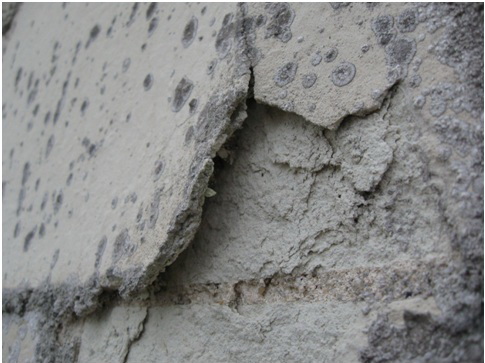
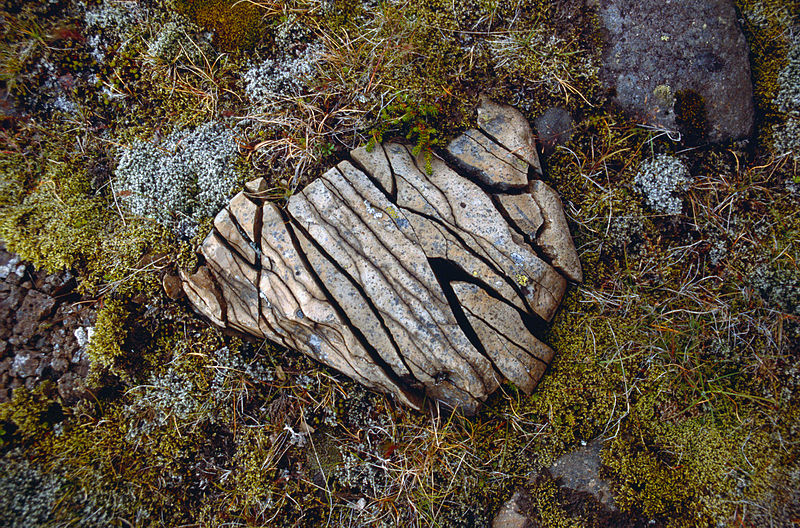
Pour loguer cette EarthCache, rendez-vous aux coordonnées, et répondez aux questions suivantes.

1 ► D'après le texte et selon vous, quelle est la cause principale de l'altération des roches de ce bâtiment ?
2 ► Décrivez l'aspect du bloc de pierre A sous l'encadré bleu. De quelle altération s'agit-il ?
3 ► Décrivez l'aspect du bloc de pierre B sous l'encadré mauve. De quelle altération s'agit-il ?
Rendez-vous maintenant à l'étape 2 en N 49° 11.609' E 2° 28.799'

4 ► Passez votre doigt sur le bloc de pierre C sous l'encadré rouge. Qu'observez-vous ? Qu'en déduisez-vous sur la nature de cette roche ? La position de cette roche dans la construction du bâtiment est-elle cohérente ? Expliquez pourquoi.
5 ► Joignez à votre log une photographie permettant ou non de vous identifier (visage, GPS, pseudo, etc.) sur le site... mais sans montrer des éléments qui pourraient compromettre la résolution de la cache. Rien d'obligatoire mais très apprécié : Soyez créatif !
Rappels concernant les « EarthCaches » :
Il n’y a pas de contenant à rechercher aux coordonnées, ni de carnet à signer sur place. Il suffit de se rendre sur les lieux, de répondre aux questions ci-dessus, et de nous envoyer vos propositions de réponse soit via notre profil, soit la messagerie geocaching.com (Message Center).
Vous pouvez loguer un « Found it » sans attendre notre confirmation. Nous vous contacterons en cas de problème ou pour fournir d’éventuelles précisions.
Les « Found it » enregistrés sans envoi de réponses seront supprimés.
Bon Géocaching !
The place of interest
The Grandes Ecuries of the Château de Chantilly were built between 1719 and 1734 by Jean Aubert on the model of the Grandes Ecuries of Versailles, at the request of Louis-Henri de Bourbon, seventh Prince of Condé. Like the whole of the Chantilly estate, which also includes the château, its outbuildings and its park, as well as the forest and the racecourse, the Grandes Ecuries have been the property of the Institut de France since 1886, following a gift from the Duc d'Aumale. The largest stables in France after those of Versailles, they had a considerable influence on the architectural and sculptural decoration of equestrian buildings in Europe, particularly in Germany, until the 19th century.
They now house the Living Museum of the Horse, and have done so since 1982.
Any geology ? Alterations
In geology, alteration is the combination of changes in the physical-chemical properties of minerals, and thus rocks, by atmospheric agents (meteoric alteration), by groundwater (subsurface alteration) and thermal waters (hydrothermal alteration). It depends in particular on the climate, the temperature of the water, the nature of the rocks and their degree of fracturing
Impact of climate
The alteration of the rocks depends largely on the presence of water. It is therefore directly related to the height of precipitation. The alteration is almost nil in dry deserts, like the Sahara desert, where erosion is purely mechanical. It is also very limited in environments where liquid water is scarce, as is the case in high mountains or high latitudes (polar climates). In areas where precipitation is not negligible, alteration is significant.
Some examples of alterations




To log this EarthCache, go to the coordinates, and answer the following questions.

1 ► According to the text and in your opinion, what is the main cause of rock weathering of this building ?
2 ► Describe the appearance of stone block A under the blue box. What kind of weathering is it?
3 ► Describe the appearance of rock block B under the purple box. Which alteration is it?
Now go to step 2 at N 49° 11.609' E 2° 28.799'

4 ► Run your finger over the stone block C under the red box. What do you observe? What do you deduce about the nature of this rock? Is the position of this rock in the construction of the building consistent? Explain why.
5 ► Attach a photograph to your log that may or may not identify you (face, GPS, nickname, etc.) on the site... but without showing anything that might compromise the resolution of the cache. Nothing compulsory but much appreciated: be creative!
Reminders about the “EarthCaches”:
There is no container to look for nor a logbook to sign. Just go to the location, answer the questions above, and send us your proposals of answers either via our profile or Message Center.
You can log “Found it” without waiting for our validation. We will contact you in case of problems or to provide any clarification.
“Found it” logs saved without sending answers will be deleted.
Happy Geocaching
Source :
https://www.asce-chantilly.fr/evolution-de-la-foret-primitive/#:~:text=Le%20sous%2Dsol%2C%20g%C3%A9ologie%20de%20la%20r%C3%A9gion%20de%20Chantilly&text=Entre%20l'anticlinal%20du%20Bray,et%20la%20Table%20de%20Montgr%C3%A9sin.
https://fr.wikipedia.org/wiki/Chantilly#Topographie_et_g%C3%A9ologie